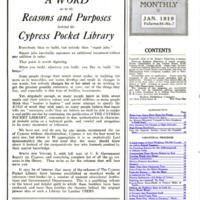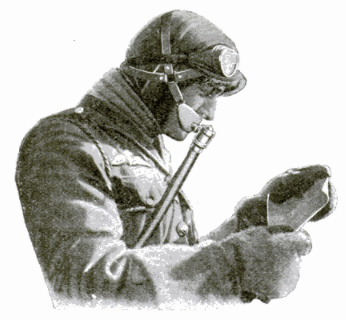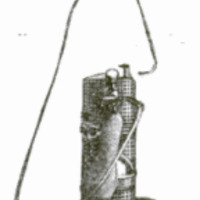Aviators were given an extra supply of oxygen they could use in case of emergency
Item
-
Title (Dublin Core)
-
Aviators were given an extra supply of oxygen they could use in case of emergency
-
Article Title and/or Image Caption (Dublin Core)
-
How Aviators Get Oxygen at High Altitudes
-
extracted text (Extract Text)
-
THE mechanical difficulties that in the early days of
|. aviation prevented the reaching of heights as great as
15,000 or even 20,000 feet were overcome; but another
difficulty had to be solved before such ascensions became
practicable. At extreme heights, especially after a rapid
aseant, the human lungs do not function properly. They
cannot adapt themselves to the sudden change of air
pressure, and the aviator is threatened with suffocation.
But this difficulty also was overcome. Each aviator
was provided with an extra supply of oxygen upon which
he could draw in case of need. The apparatus consists of
an Arsonval vacuum bottle enclosed in a metal basket.
The bottle is filled with enough liquid
oxygen for two persons for one hour
at a height of 15,000 feet. When the
stop-cock is opened the oxygen pisses
in gaseous form through a tube con-
nected with the bottle.
The cold produced by the evapora-
tion of the liquid gas is so intense that
the gas, if breathed in as it comes from
the bottle, would congest the lunge
and cause death. To make it troath-
able it is first conducted through a
long pipe colled around the basket
containing the bottle, and then into
rubber bag, from which a tube conveys
the gas to the aviator. A second coil, with a rubber bag
and service tube, is provided for the use of the passenger.
There is no danger of an explosion should the bottle
containing the liquid oxygen be struck by a projectile;
but the heat from the burning of the airplane would be
disastrous. It would cause the gas to expand and burst
the container, and the liberated
oxygen would aid in destroy-
ing the airplane.
The entire equipment for
two persons weighs only about
eighteen pounds and occupies
but little space in the fuselage
of the airplane. In the Ameri-
can army it has recently been
ordered that every pilot who
goesaloft mustcarry enoughox-
gen for from six toeight hours.
How necessary oxygen is to
an aviator was demonstrated
by the experience of Captain
R. W. Schroeder, U.S. A., on
his remarkable flight of Sep-
tember 18, 1918, when he
broke all altitude records
by ascending to a height of
28,900 feet.
-
Language (Dublin Core)
-
eng
-
Date Issued (Dublin Core)
-
1919-01
-
pages (Bibliographic Ontology)
-
60
-
Rights (Dublin Core)
-
Public domain (Google digitized)
-
Archived by (Dublin Core)
-
Davide Donà
-
Marco Bortolami (editor)
-
Spatial Coverage (Dublin Core)
-
Europe
 Popular Science Monthly, v. 94, n. 1, 1919
Popular Science Monthly, v. 94, n. 1, 1919




